ajk1
Structural
- Apr 22, 2011
- 1,791
Is there any reason to specify a 135° hook on a stirrup rather than a 90° hook when the hook is on the side of the beam that is contiguous with a slab (please see attached)? Wouldn't the 90° be preferable because it is easier to fabricate the beam rebar cage with stirrups with 90° hooks? I understand that 135° hook is required in seismic regions if the hook is on the exterior side of the beam, because the cover concrete in that case can spall off rendering the hook ineffective. I ask the question because I am reviewing/revising our office typical details and I think the detail that shows 135° hook on stirrup at interior corner of beam should be a 90° hook. But I see 135° hooks also on other than our own drawings. Seems to me not the best thing to do, and is just put on willy-nilly. Do you agree that 90° hook is ok at interior corners of beams,even in seismic regions?


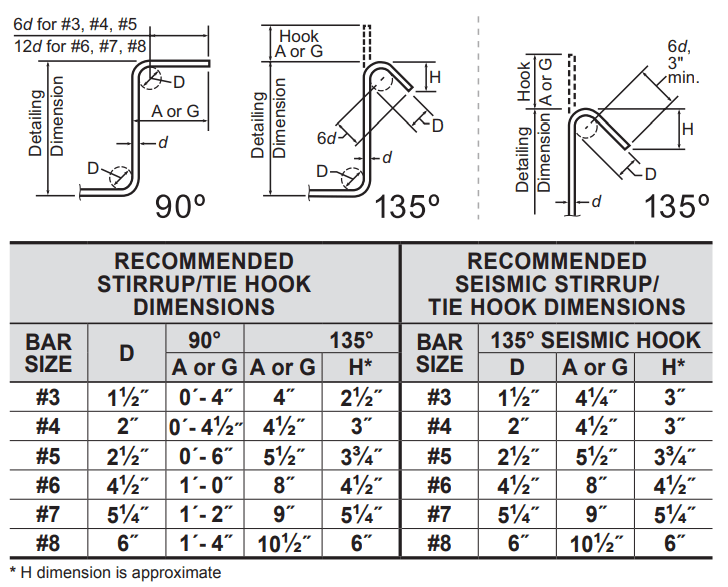
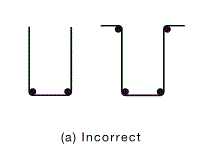
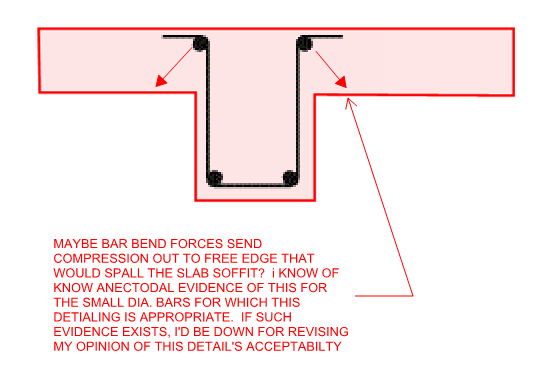
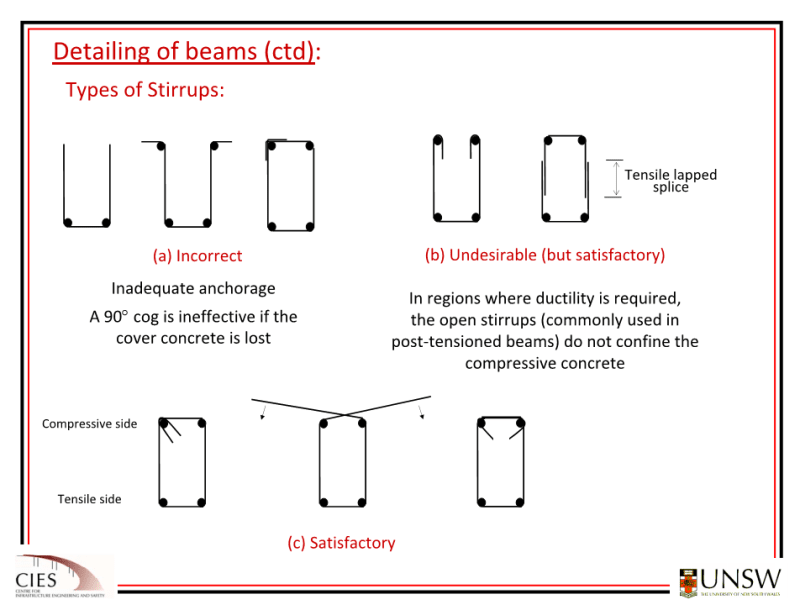
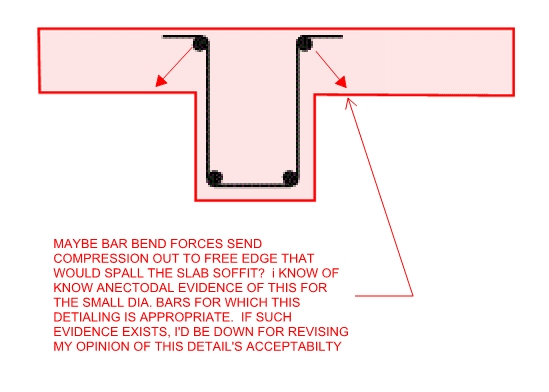
![[upsidedown] [upsidedown] [upsidedown]](/data/assets/smilies/upsidedown.gif)